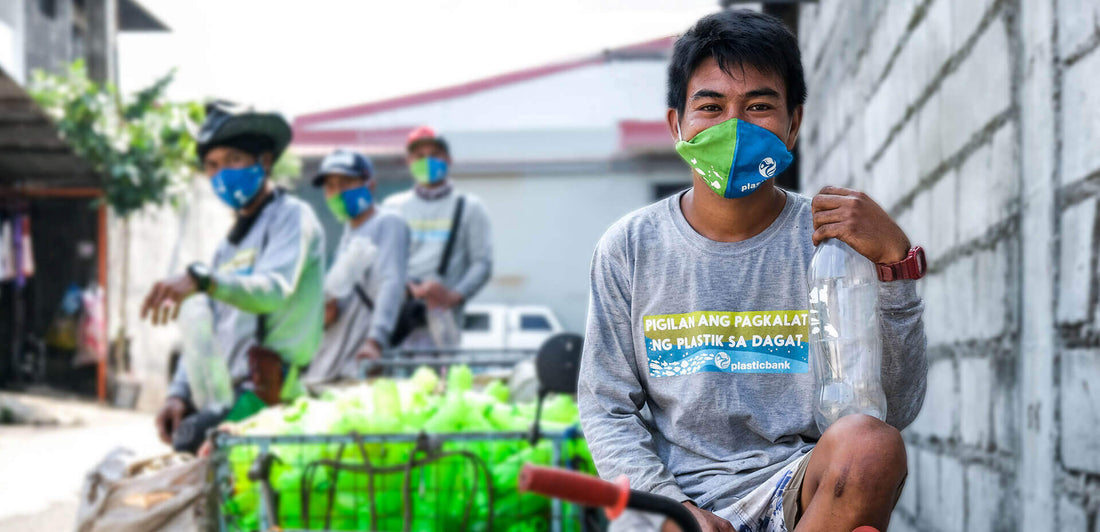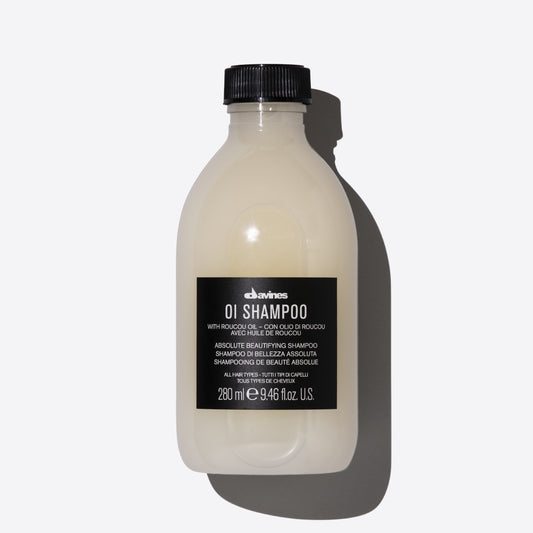Our partnership with Plastic Bank®
Davines is proud to partner with Plastic Bank to stop ocean bound plastic and improve lives. Through our partnership, we will:
- Prevent 100 tonnes of plastic from entering the ocean in 2021
- Empower collectors in coastal communities in Indonesia, the Philippines and Brazil
Empowering a regenerative society
Plastic Bank is helping the world stop ocean bound plastic while improving the lives of collector communities. They build ethical recycling ecosystems in coastal communities and reprocess the materials for reintroduction into the global manufacturing supply chain.
#1 - Revolutionize recycling.
Plastic Bank helps building ethical recycling ecosystems in vulnerable coastal communities all over the world.
#2 - Improves people's lives
Collectors receive bonuses, which help them provide family needs such as groceries, fuel, school, and health insurance.
#3 - Stop ocean-bound plastic
Collectors collect ocean-bound plastic waste from land and beach, stopping it from reaching our oceans.
#4 - Ensure transparency
Plastic Bank's blockchain platform provides real-time data – allowing for transparency, traceability, and rapid scalability.
“In interdependence - which is one of the founding values of the B Corp movement - there is no social sustainability without environmental sustainability, there is no progress without respect for ecosystems and human rights. Without human ecology, there is simply no future.
- Davide Bollati, Davines Chairman
Rethinking plastic
Reduce, reuse, recycle, regenerate
The challenges of packaging management
For beauty companies, packaging has always been a huge matter of identity: it defines the brand image, guarantees the performance of the formula, ensures customer safety.
But since 2014 the Davines group has also been addressing another issue: the impact that packaging has on the planet. An open question for which we must say we are still seeking the best answer.
“We are conscious that packaging has an impact, and no material can be considered as perfect.
Why are we using plastic?
Up to toady, Davines Group is using mainly four different types of material for its packaging: paper, glass, aluminum and plastic. Yes, plastic.
For each combination of formula and packaging, we do an ad hoc environmental impact analysis. Especially for liquid formulas like shampoos and conditioners, plastic packaging allows for the lightest designs, a substantial reduction in raw material used, weight, and therefore lower CO2eq emissions.
“Plastic allow us to minimize CO2eq emissions, compared to most of other packaging materials.
Our Plastic Footprint
However, the use of plastic encompasses a variety of challenges linked to its possible dispersion into the environment. We have chosen to accelerate our efforts on this issue and in 2020 - for the first time - we calculated* our plastic footprint.
In few words, we calculate the amount of plastic waste we generate through our business: 721,9 tons in 2020.
* Calculated according to the “Guidelines for Corporate Plastic Stewardship” published in February 2021 by 3R Initiative, EA, South Pole and Quantis. According to the methodology, the calculation considers the following plastic categories: upstream-operational, operational, operational-downstream.
What is plastic leakage?
Once aware of the plastic footprint, the next step was asking ourselves if the plastic waste generated by our business was correctly managed and recovered. And - consequently - in which percentage it was not, and may end up dispersed in the environment: this is what we call plastic leakage.
According to our calculations* only 14 tons of plastic waste - 1,9% of our plastic footprint - are improperly managed and could end up in the environment.
* Calculated following the methodology proposed by “Plastic Leak Project - Methodological guidelines” published in 2020 by Quantis and EA (and mentioned in the document of point 1 above) and considers only macro-plastics.
722 tons
Plastic Footprint
The total amount of plastic waste generated by Davines Group: it includes both the waste produced by our manufacturing plant and offices (27%), and the plastic packaging of our products marketed worldwide (73%).
14 tons
Plastic Leakage
There is still a residual part - 1,9% of our plastic footprint, about 14 tons - that may potentially end up in the environment due to inefficient waste management. This inspired us to accelerate our efforts on the topic.
100 tons
Plastic Collection
In the autumn 2021, we will start a plastic collection project with Plastic Bank to prevent that 100 tons dispersed in the environment end up in the ocean, involving local people in the collection to improve their quality of life.
The type of plastic we use: a circular approach
When improving our packaging environmental impact, working on managing properly our product end-of-life is meaningful. But what is truly crucial is eco-designing the packaging, from the beginning of the life cycle itself.
Therefore since 2015 - when we were using only fossil virgin plastic - we strongly moved to recycled or renewable sourced plastic materials.
“When choosing plastic, we prioritize recycled or bio-based plastic.
59% recycled or bio-based plastic packaging
631 tons of plastic saved from 2014 thanks to eco-design
We save plastic thanks to eco-design principles
On one side we have the quality of the plastic we choose, on the other the quantity we use. Davines Group strives to design lighter packaging, still guaranteeing its safety and functionality: more lightweight packaging means a minor quantity of material used, thus fewer resources consumed.
We also aim for simplification, reducing the packaging components as much as possible, eliminating unnecessary plastic elements.
Plastic Glossary
All the things you've always wanted to know about plastic and never dared to ask.
BIO-BASED PLASTIC
This is a plastic that derives from renewable sources, such as sugar cane, corn starch, cellulose, glucose and vegetable oil. There are different types of bio-based plastic: recyclable or biodegradable. Important: Bio-based doesn't mean biodegradable. Davines group is using bio-based plastic coming from renewable sources like sugar cane, food-grade and recyclable. The bio-based plastic we select is Bonsucro certified, which ensures the origin of the material from responsibly managed sources.
PE PLASTIC (POLYETHYLENE/ HDPE LDPE)
It has high mechanical resistance, good rigidity and barrier to humidity and chemicals. Mat, suitable for the production of bottles, canisters, caps and lids, films. Recyclable. Not currently available in food grade certified recycled version. It tends to present aesthetic inhomogeneities.
PET PLASTIC (POLYETHYLENE TEREPHTHALATE)
It is shock resistant and has good mechanical properties and good impermeability to gases. It is used for the production of bottles and pots. It is one of the most easily selectable and recyclable plastics. The R PET recycled material maintains characteristics very similar to the virgin polymer. Aesthetically less homogeneous than the virgin material.
PP PLASTIC (POLYPROPYLENE)
It has a good thermal resistance and high rigidity, it acts as a barrier to water vapor but not to gases. It is used for the production of pots, caps/lids. Recyclable. Not currently available in food grade certified recycled version. It tends to present aesthetic inhomogeneities.
RECYCLED PLASTIC
Plastic generated from processed waste to be reintroduced into the value chain. Davines Group is using only 100% post-consumption recycled plastic (not from industrial waste). The advantage of using recycled plastic lies in the possibility of reducing the use of non-renewable resources, in a circular economy perspective. By recycling plastic, we maximize the value of this material, even at the end of its life cycle, and minimize its environmental impact by becoming waste.



